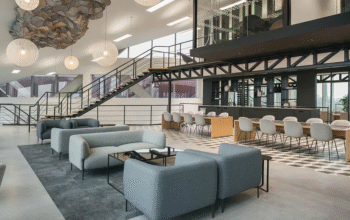Creating eye-catching custom bags isn’t just about packaging—it’s about telling your brand’s story in motion. From colour palettes to typography, every design choice influences perception. This guide explores key design principles and creative strategies that make your printed bags powerful ambassadors for your brand wherever they go.
The Power of First Impressions
A bag often creates the first tangible connection between a brand and its customer. Its design, feel, and colours speak volumes about your brand identity, often before a single word is read. The texture of the material, the quality of the print, and the choice of shape or handle all contribute to how customers perceive your business. Whether you’re a boutique emphasising elegance or a corporate store focusing on professionalism, thoughtfully designed printed bags can elevate the customer experience and reinforce brand recognition. A well-crafted design not only reflects attention to detail but also helps customers associate your brand with reliability, creativity, and value, turning an everyday item into a lasting reminder of your identity.
The Role of Consistency in Building a Strong Brand
Consistency builds trust. Every element—from your logo placement to colour choice—should align with your overall brand message. Your bag design must reflect the same tone your website, packaging, and social media portray. When customers recognise familiar visual cues, it strengthens loyalty and memorability.
Simplicity Enhances Recognition
Complex designs can overwhelm viewers. Clean layouts, minimalist graphics, and strategic use of space make your message clear and appealing. Simplicity doesn’t mean dullness; it ensures that your logo and brand name remain the central focus. Use contrast smartly to guide the viewer’s attention naturally.
Choosing the Right Colours
Colour psychology plays a major role in how customers perceive your brand. Bright colours grab attention, while muted tones suggest sophistication. Before finalising your palette, think about the emotions you want to evoke and how those colours complement your logo. A cohesive scheme enhances recognition and visual harmony.
Typography Matters
Fonts communicate personality. A playful font may suit a creative brand, while a clean sans-serif fits professional businesses. The typeface should be legible, even from a distance, and complement your logo. Limit font styles to one or two to avoid clutter. Clarity always beats complexity.
Logo Placement and Size
Your logo is the focal point of your design. Place it where it will be most visible when the bag is carried. Ensure it’s large enough to be recognised but not so dominant that it overwhelms other design features. Subtle placement often feels more sophisticated and professional.
Material and Finish
The texture and finish of your bag can enhance its perceived value. Matte finishes give a premium feel, while glossy coatings draw attention. Similarly, kraft paper or eco-friendly materials signal sustainability. Choose materials that align with your brand’s values and resonate with environmentally conscious consumers.
Balancing Aesthetics and Function
A visually stunning bag loses value if it isn’t practical. Consider the purpose and durability—handles should be sturdy, and size should suit the products you sell. A well-constructed bag ensures reusability, keeping your brand visible long after purchase, extending marketing reach organically.
Using Space Effectively
White space, often overlooked, can be a designer’s best friend. It prevents your design from feeling cluttered and directs focus to key elements. When used wisely, negative space enhances readability, balance, and overall appeal. Every inch should serve a clear purpose in the composition.
Incorporating Taglines and Messaging
Adding a short, memorable tagline can help communicate your brand promise. Keep it concise—no more than a few impactful words. Whether it’s humour, elegance, or inspiration, your tagline should reflect your tone of voice and leave a lasting impression with your audience.
Visual Hierarchy and Balance
Every design should have a clear visual flow. Prioritise what customers should notice first—typically your logo, then any secondary message or pattern. Aligning visual elements symmetrically ensures balance and helps customers instantly understand your brand’s core identity at a glance.
Seasonal and Limited Edition Designs
Creating special-edition bags for holidays or events can boost engagement. It adds freshness while maintaining core brand identity. Limited runs make customers feel valued and often turn everyday packaging into collectible keepsakes, strengthening brand connection and encouraging repeat business.
Sustainability in Design
Eco-conscious consumers value sustainability. Using recyclable materials, water-based inks, and minimal waste designs sends a strong ethical message. When customers see a brand caring for the planet, it creates emotional alignment. Sustainable printed bags don’t just look good—they reflect responsible branding in action.
Aligning Design with Target Audience
Your audience determines your design direction. A youthful crowd might prefer bold graphics and vibrant hues, while a luxury clientele expects understated elegance. Understanding who you’re speaking to ensures that your bag design resonates and communicates effectively to those who matter most.
Adding Interactive Elements
Consider incorporating digital interaction through QR codes or social media handles. This transforms a physical bag into an online engagement tool. When customers scan or share, they amplify your reach and create a bridge between in-store experience and digital identity.
Testing Before Production
Before printing in bulk, create prototypes and gather feedback. Sometimes colours, text placement, or proportions appear differently in print compared to screen designs. Testing saves cost, reduces errors, and ensures your final printed bags represent your vision with precision and quality.
Long-Term Branding Benefits
A well-designed bag is more than packaging—it’s an advertisement your customers carry into the world. Whether reused for shopping or gifted, it continues to promote your brand organically. Every public appearance reinforces awareness, creating a ripple effect of visibility and brand recall.
Final Thoughts
Designing an effective custom bag requires a careful blend of creativity, functionality, and brand strategy. A well-executed design not only enhances your product presentation but also becomes an integral part of your brand story. Every visual element—from the colour palette to the texture—conveys a message about who you are as a business.
By focusing on clarity, consistency, and quality, you can transform everyday packaging into a silent ambassador for your brand. When customers reuse your printed bags, they extend your visibility and promote your values organically. Over time, such thoughtful design strengthens recognition, trust, and loyalty—turning a simple bag into a memorable brand experience that continues to speak long after the purchase.






